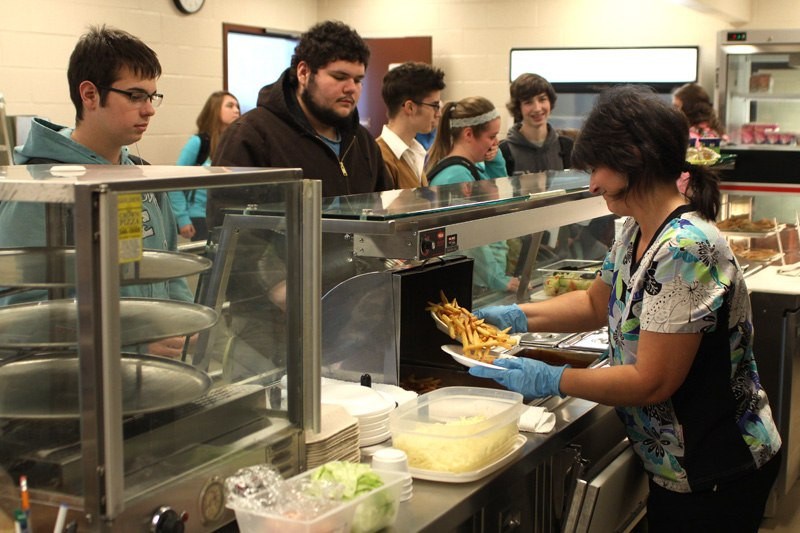Revenue losses have led to some changes at high school cafeterias.
While losses are typical, Lakehead Public Schools high school cafeterias showed a shortfall of nearly $160,000 last year, which is $100,000 more than the previous year. The dip coincides with the provincial government’s healthy eating guidelines, which went into effect in September 2011.
That change meant cafeterias had to remove deep fryers from the kitchen.
“I think that plays a role but I don’t think that’s the whole picture,” superintendent of business David Wright said just before lunchtime Monday at Superior Collegiate Vocational Institute.
Declining enrollment also factored in. To curtail the lost revenue, the board’s four high schools have changed the kitchen hours so that food service is only available for an hour-and-a-half during lunch time.
They’ve also standardized the menu and supply chain. It seems to have helped as the board is projected to lose $70,000 by the end of the year.
“We think we’re moving in the right direction,” Wright said.
“Cafeterias have never been a big money-maker for us, that’s not the idea. The idea is to give kids an opportunity to buy healthy food, reasonably priced food in their schools. We’re just trying to work to getting them cost neutral.”
Some factors, like students heading off school property to eat, can’t be controlled. Grade 12 student Graeme Dickson said he eats at the Superior cafeteria a couple of times a month.
“The stuff we’ve got here is pretty good compared to what it used to be in school cafs,” he said.
Still, Dickson and his friends will head to a nearby coffee shop or bring their own lunch from home more often than not.
Donis Tucker, grade 12, eats in the cafeteria almost every day but doesn’t always eat the food. Older students with vehicles will head out for lunch just to get a break from school she said.
“Just to get away from the school. They do have good food but you just don’t always want to be here on your lunch.”
